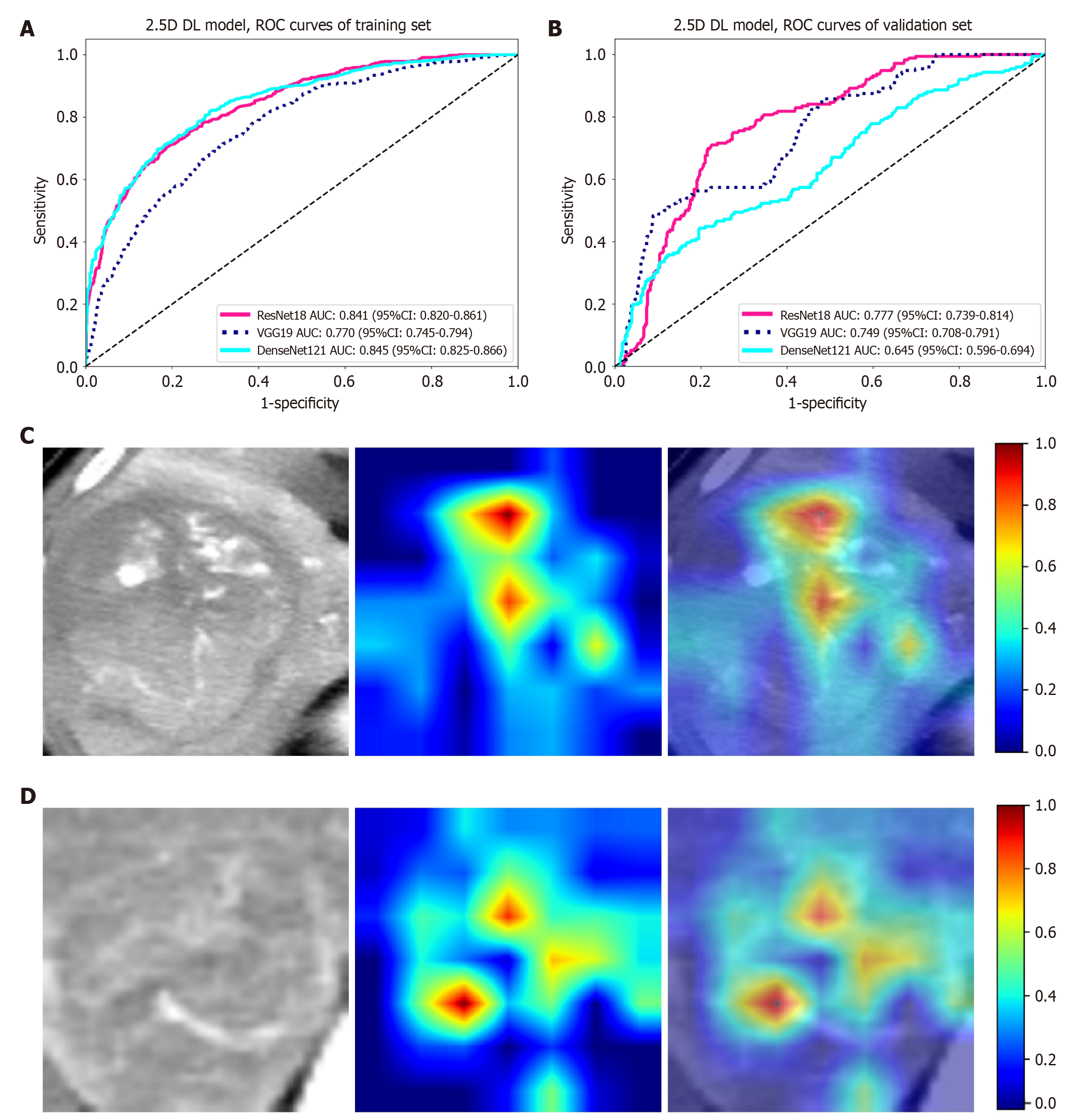Copyright
©The Author(s) 2025.
World J Gastroenterol. Aug 14, 2025; 31(30): 109186
Published online Aug 14, 2025. doi: 10.3748/wjg.v31.i30.109186
Published online Aug 14, 2025. doi: 10.3748/wjg.v31.i30.109186
Figure 3 Receiver operating characteristic curves and gradient-weighted class activation mapping for slice-level prediction of models.
A: Receiver operating characteristic (ROC) curves of three deep learning models: ResNet18 (red), Visual Geometry Group 19 (VGG19) (blue), and DenseNet121 (cyan) in the training set; B: ROC curves of three deep learning models: ResNet18 (red), VGG19 (blue), and DenseNet121 (cyan) in the validation set; C and D: Gradient-weighted class activation mapping visualizations of two representative samples, which demonstrate how the models selectively focus on different image regions for prediction, thus enhancing the understanding of the models’ attention mechanisms in practical applications. 2.5D: 2.5-dimensional; DL: Deep learning; ROC: Receiver operating characteristic; AUC: Area under the curve; CI: Confidence interval; VGG19: Visual Geometry Group 19.
- Citation: Cen YY, Nong HY, Huang XX, Lu XX, Pu CH, Huang LH, Zheng XJ, Pan ZL, Huang Y, Ding K, Huang DY. Computed tomography-based deep learning and multi-instance learning for predicting microvascular invasion and prognosis in hepatocellular carcinoma. World J Gastroenterol 2025; 31(30): 109186
- URL: https://www.wjgnet.com/1007-9327/full/v31/i30/109186.htm
- DOI: https://dx.doi.org/10.3748/wjg.v31.i30.109186









